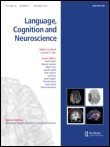Abstract
Three experiments used homophones as a test case to examine the roles of phonology and morphology in the spelling process. We introduced university students to novel meanings of spoken forms, for example, presenting /fid/ as a rare word for a type of furniture. We asked whether participants avoided spelling the new word as ‹feed›, instead using alternatives such as ‹fead›. Although participants produced some alternative spellings, they used spellings that resulted in homophones, i.e. spelled /i/ as ‹ee›, more often in items like /fid/ than in control items like /fip/. Participants were more likely to use novel spellings for homophones when given a choice between a novel spelling and an alternative than when asked to produce their own spellings. A major influence on spelling production thus appears to be the lesser effort that is required to use a familiar whole-word orthographic form compared to that needed for assembling a novel spelling.
Treiman, R., Seidenberg, M., & Kessler, B. (2015). Influences on spelling: evidence from homophones. Language, Cognition and Neuroscience, 30(5), 544-554.
